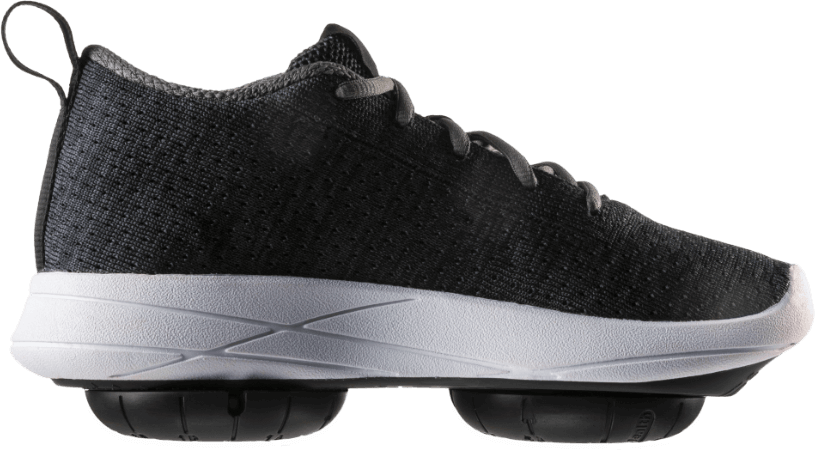It can be exhausting trying to figure out where our aches and pains come from. Pain inside the knee joint is no different! Whether the pain is fleeting or persistent, mild or excruciating, there are various mechanisms at play that are important to understand in order to determine how to move towards diagnosis and treatment.
When your knees are functioning at their best, you don’t even think about them. But when they start to ache it becomes difficult to ignore. It may take weeks, months, or even years in some situations before they hurt enough to start thinking about treatment. Remember, the human body can handle a lot, but the longer we ignore the pain, the worse it can become.
In order to avoid the pain, your body may begin compensating in ways that can lead to increased pressure in other parts of the knee, accelerating the natural degenerative process in the joint. It’s important to see a doctor or medical professional as soon as possible to explore treatment options, take preventive measures, and plan ahead. This post is specific to internal knee pain: pain that feels like it is coming from deep inside the knee joint. If you’re looking for information on pain on the inner side of your knee, the part that faces the opposite leg, check out our blog post about medial knee pain.
The more we understand what’s happening, the better the results from the treatment will be. Before you think to yourself, “I can live with this a bit longer,” let’s talk over some possible symptoms and what is likely to correct them.
Symptoms of pain inside the knee joint
What does deep knee pain feel like? It depends on your personal experience, as well as which part of the knee is most involved. The pain may feel sharp, dull, achy, burning, or simply feel like pressure in the joint. If there isn’t severe pain, it may feel like you’re more aware of one knee as compared to the other one or feel a lack of stability. Some people experience a deep ache from within the joint, primarily at bedtime or while resting. Others feel sharp pain only when squatting or bending or a nagging stiffness after sitting in the same position for extended periods of time.
Different experiences don’t always point to different causes—two patients suffering from the same problem, such as an MCL tear, may experience significantly different symptoms. This can make it hard to figure out what’s causing the problem. No matter what is happening, though, there is usually something that can be done. Keep an open mind and keep communicating with your practitioner. It’s better to investigate what’s happening instead of ignoring it and waiting for it to get worse.
(It’s important to note that if the pain is constant, dull, and does not change with movement or activity, or if the knee locks and won’t move at all, it is critical to seek urgent medical attention).
Possible causes of pain deep inside your knee
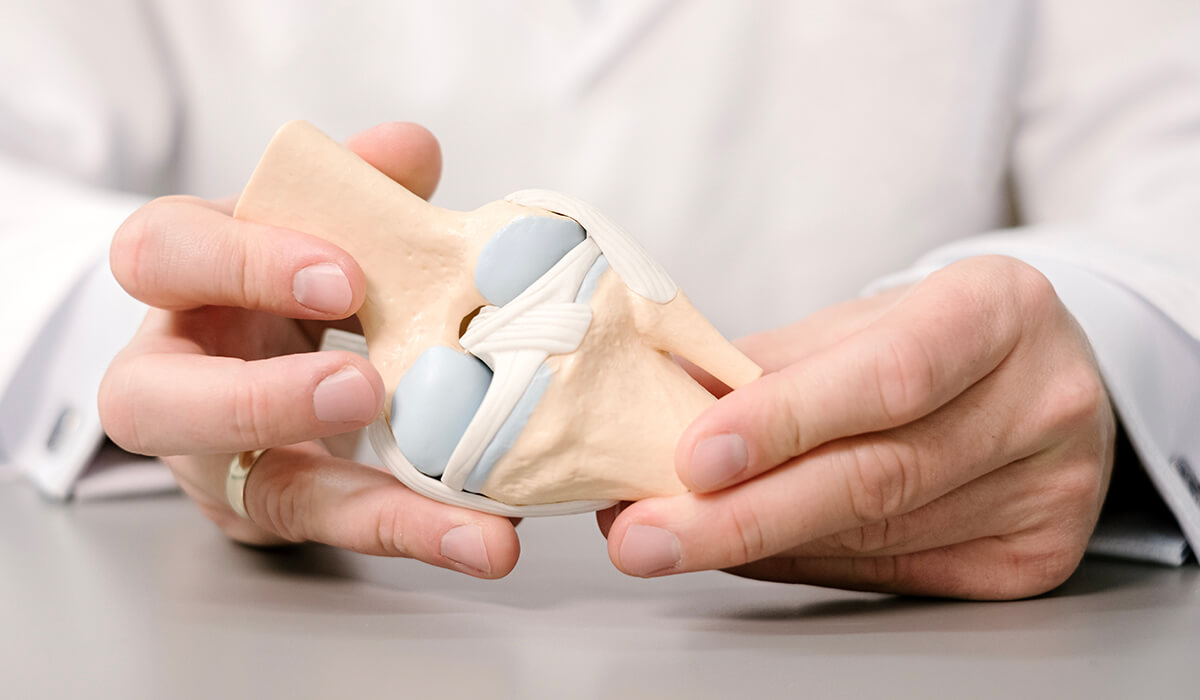
There are many conditions that can cause pain deep inside the knee: soft tissue damage (ligament sprains or tears, muscle tears), damage to the fibrocartilage from sports or aging (meniscus tears),
damage to the joint cartilage due to cumulative excessive force over time, a history of intra-articular fractures, or bone fractures above or below the knee that created increased force inside the joint. A problem in one part of the joint often impacts other parts, especially when left untreated.
Other issues can be caused by a buildup of inflammatory fluid in response to the injury or degenerative change in the joint, which can cause it to feel stiff or sore. Swelling in the joint or the air pockets within the joint (called bursae) can also lead to problems. In rare cases, there can be something physically blocking the joint, like a torn meniscus (cartilage) or loose bone fragment (osteophyte) inside the joint. This can impede movement, and in extreme instances, cause the knee to lock.
Diagnosing pain inside the knee
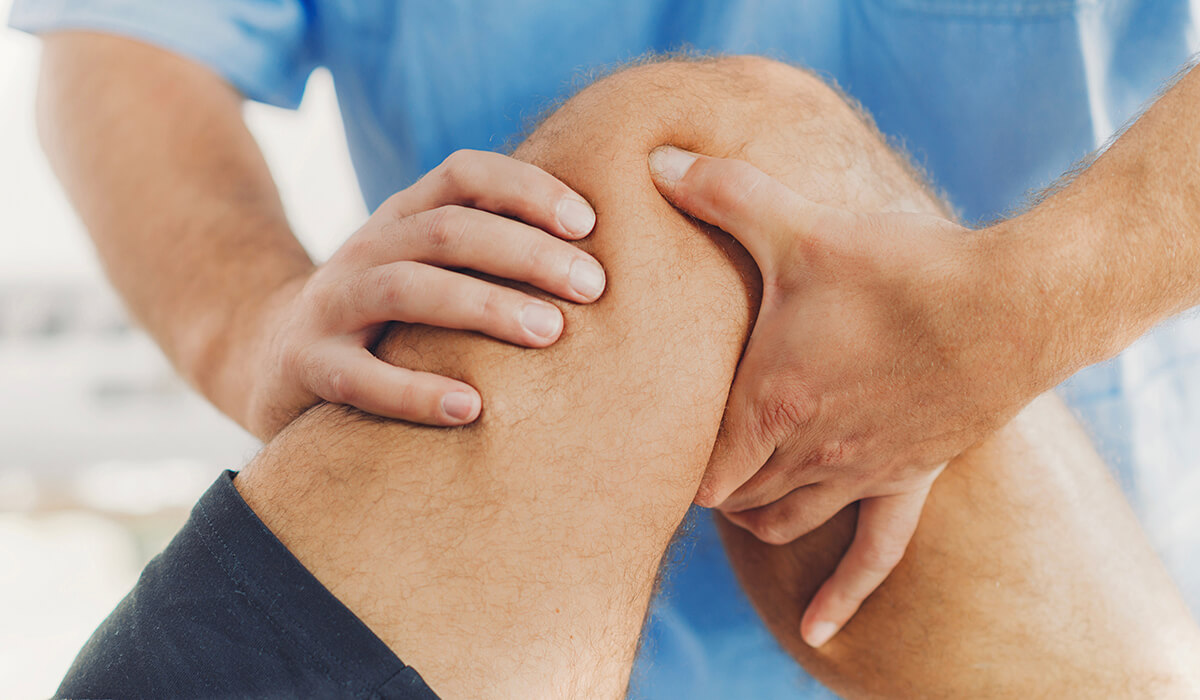
Let’s say you’ve recently had a fall or an injury while playing sports, you can bring that information to your physician or physical therapist, and they can start to piece together what may be causing the pain. From there, a specific treatment will be suggested. Best case scenario, right? Well, it’s not always that simple. There are situations where you’re not able to pinpoint an exact “cause” for the pain. Your physician or physical therapist will want to start by examining your knee and take a full history. This will help them better understand the cause of the pain you’re experiencing. Certain external signs can point to specific problems. For example, swelling can cause the knee to be more flexed (bent) than normal. Your clinician will also want to determine whether there is any blockage in the joint and how your actions or other conditions affect the pain. We’ll look at both of these below.
What does it mean if your joint is locking?
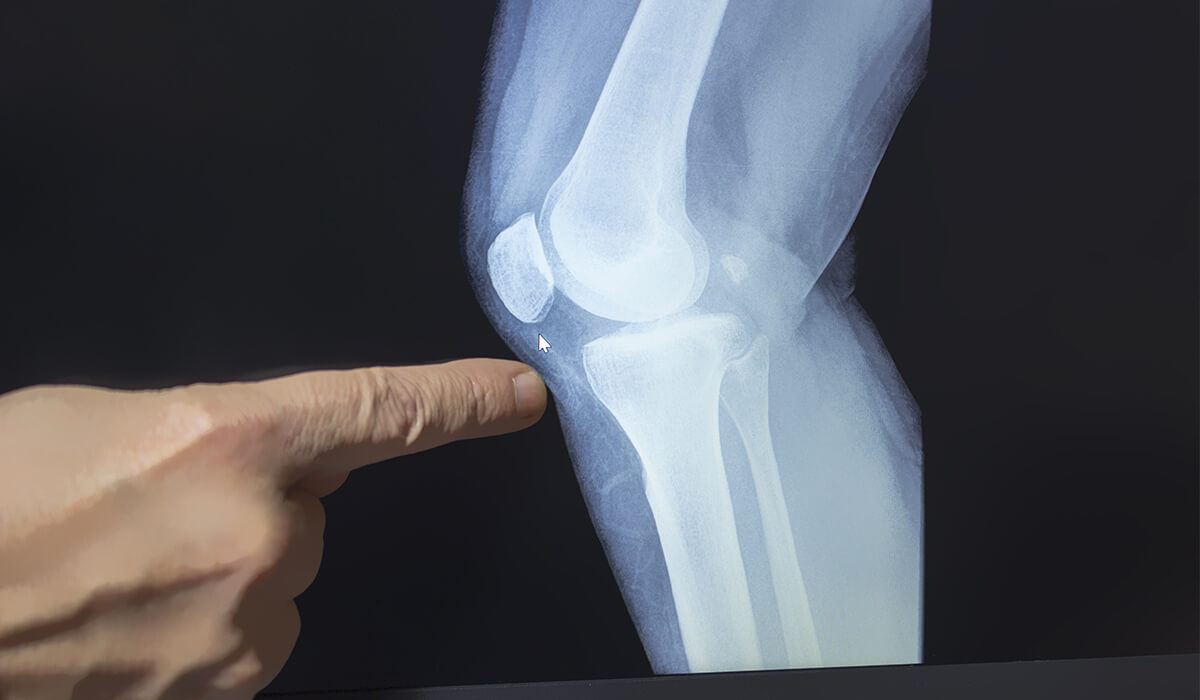
It’s common to mistake stiffness for locking. There is a clue, however, that helps to determine if it’s real locking of the knee called “true locking.” This occurs when something loose is interfering with joint movement. It could be a bit of meniscus that has been torn off completely or a loose bit of degenerated bony extension (osteophyte). This loose body blocks the smooth congruency inside the joint, creating a block. This is extremely painful and frequently requires arthroscopic surgery to remove the loose body. An X-ray or MRI may be needed to determine if surgery is a good option.
What impacts your pain?
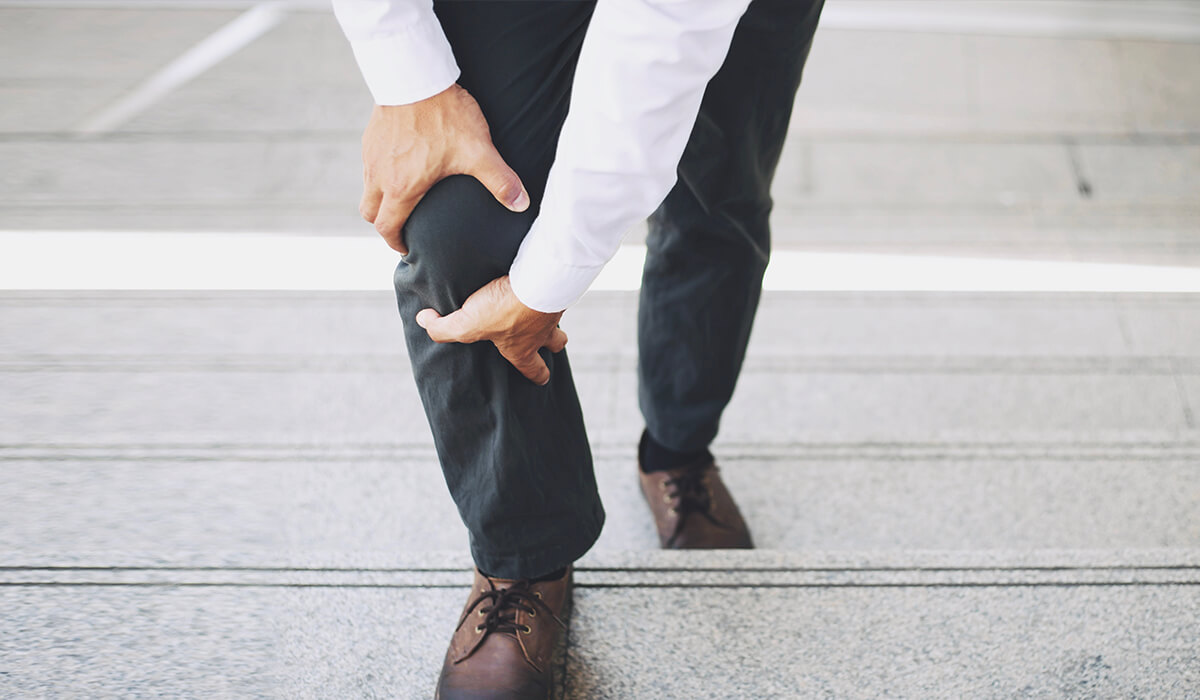
We’ve covered a lot about pain inside the knee joint and you’re probably seeing that it can be a simple to a complex process, right? What’s important, though, is that you’re learning and becoming more aware of what is happening inside your knees! If you’re able to move your knee, the next step is to see
what impacts the pain. Does the pain get worse when you’ve been sitting for an extended period of time? What about when bending or squatting, on stairs, or in other situations? Keeping track of what makes your pain worse can help a lot with a diagnosis.
In some cases, an X-ray may look normal, but pressure on the joint is causing pain without any visible damage. In other cases, especially among older people, an X-ray may show bone rubbing directly on bone while the patient feels fine and is able to move without pain. This is because the X-ray doesn’t reflect the pace at which the changes occurred, how functional the patient is in daily life, or the strength of the muscles that support the bones and control the force.
An X-ray can be a helpful tool and provides partial information, which is then supplemented by your doctor or physical therapist’s analysis of your description of the pain and how it affects you.
Treatment options for pain inside the knee joint
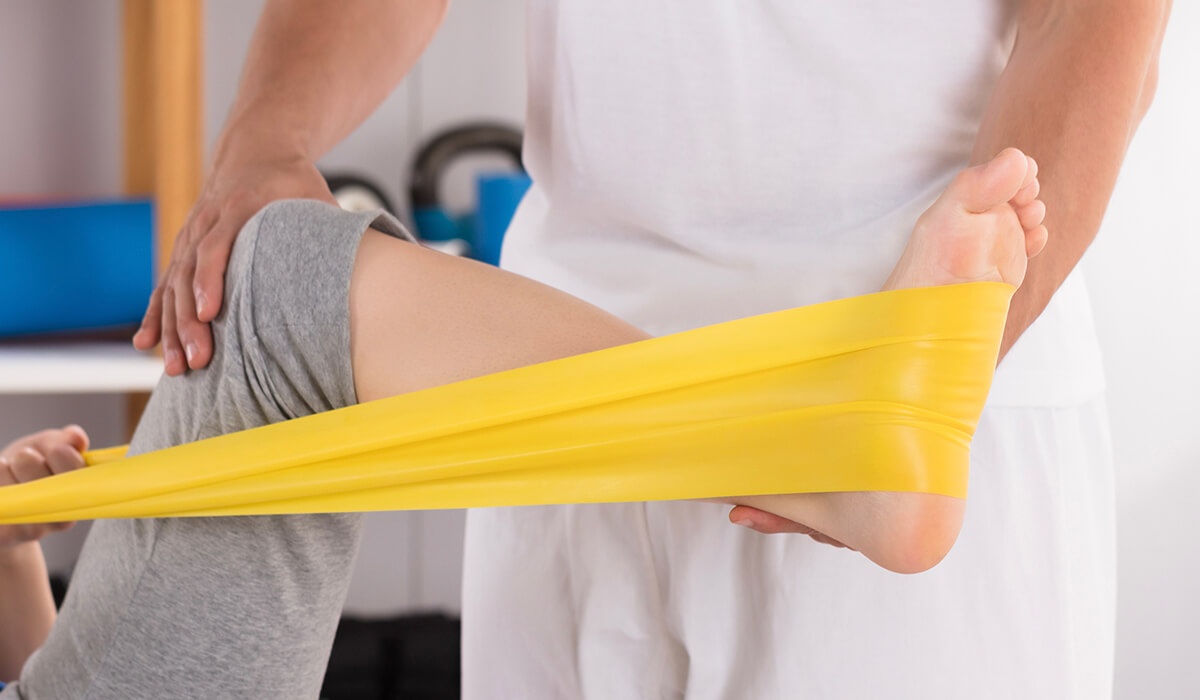
Treatments are a combined effort approach that includes your physician or physical therapist, you, and if needed, a supportive family member or friend who may be part of your recovery plan.
First steps in treatment
The first step in treatment may include anti-inflammatory medication, if appropriate and safe for you, to reduce pain and swelling, along with physical management such as heat, ice, exercise, and physical therapy to strengthen and stretch the muscles around the joint.
Knee strengthening exercises
Knee strengthening exercises can help relieve pain inside the knee joint by strengthening the muscles that support the knee joint. The body is resilient and can get better, especially when there is a plan in place. Patients with pain inside the knee, in many cases, have slow quadriceps muscles and overactive
hamstring muscles. This means the muscles don’t work as they should, adding to the stress on the already painful joint.
The right exercises can help muscles around the knee joint learn to absorb shock and relieve stress on the joint. They can also help stabilize the knee joint and prevent further injury and loss of balance. (Again, the body is remarkable!) Stretching exercises can also help reduce knee pain and maintain function and mobility. Stretching helps maintain the knee joint’s full range of motion and can also help reduce stiffness.
Do you exercise and stretch regularly but still suffer from knee pain? This is a great opportunity to consult with a gait expert. A gait expert can assess the way you walk to determine how your body is absorbing shock, which muscles need to be stimulated, and which ones need to relax. Your muscles can be trained to improve their timing so your knees absorb shock better with every step you take. Check out our blog on knee strengthening exercises for osteoarthritis to learn more.
Injections
Cortisone and hyaluronic acid injections for knee pain (sold under several brand names including Supartz, Euflexxa, Hyalgan, Orthovisc, and Monovisc) may help manage pain and swelling, although they don’t physically relieve pressure in the knee.
Surgery
Often considered the last resort, knee surgery is generally elective. A doctor can make the recommendation, but it’s the patient’s choice ultimately. Only you know how the pain affects your daily life. Although surgery can treat arthritis, doctors recommend that patients do everything in their power to stay healthy, strong, flexible, and reduce the load on the joint, so that if and when they’re ready for a “new knee,” they will be physically better off after getting it.
“Teaching” your nerves and muscles
Imagine being able to go about your daily activities and refine your movements, reduce the load on your painful joint, and alleviate the discomfort of deep knee pain. That sounds like a win-win situation, right? Biomechanical treatments from AposHealth do just that. While you go about your daily activity, these shoes promote neuromuscular re-education, teaching your nerves and muscles a habit of healthy movement that continues even after the pain has subsided, when you’re wearing regular shoes or even no shoes at all. This process is called motor learning.
As your muscles begin to work better, you’ll find that pain inside the knee tends to improve. You may find that you’re less preoccupied with your knee, able to sit for longer periods of time without moving uncomfortably, or that your sleep improves. You may be able to walk faster and have an easier time balancing on the painful leg too.
Extensive research has proven the effectiveness of biomechanical treatments. For example, in a retrospective analysis conducted on 455 patients with knee osteoarthritis in the UK, the patients’ gait (the way they walk) improved significantly after using shoes designed to adjust their biomechanics for six months. Another study of 220 patients with osteoarthritis showed a significant decrease in patient pain after 24 weeks.
Outlook
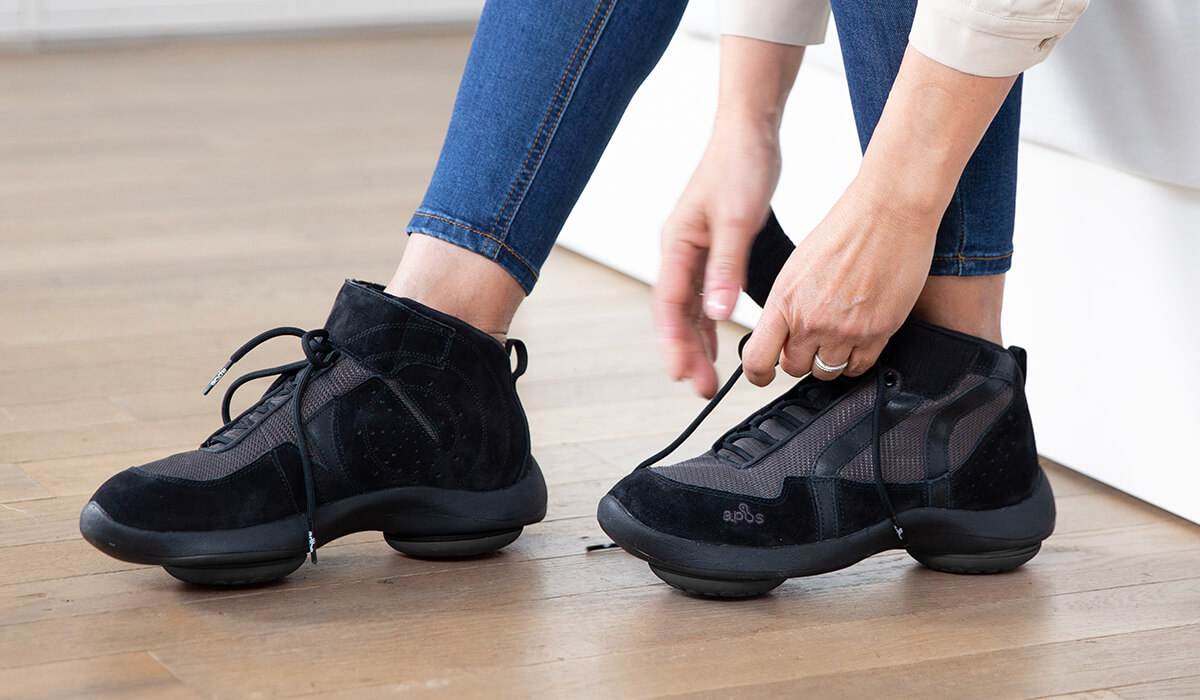
The good news is that pain on the inside of the knee is often manageable. There are a lot of treatment options available, and the sooner you get started with an effective treatment plan, the easier it may be to remain active and minimize pain. This is about you getting the most out of your life!
AposHealth has innovative treatment options for patients with knee pain. Our clinicians assess your condition and instruct you in using the foot-worn device to decrease pain inside your knee, help your muscles control the joint, and reduce the rate of deterioration.
Still not sure? AposHealth patient Sandra Gonçalves Pereira put it like this:
"I was diagnosed with osteoarthritis and referred by my physician to AposHealth. I see such a huge improvement in the way I walk. The pain is reduced to a point that I can enjoy walks with my family and my dog once again 😉😊. Thank you for helping me get back to my normal life! I recommend AposHealth—if you have doubts, just give it a try. You’ll be shocked by the huge difference."
- Sandra Gonçalves Pereira
Pain inside your knee can be caused by a variety of conditions, and as we’ve seen here today, there are treatments and options. Your doctor or physical therapist can help you assess your pain and help you determine the best course of treatment. With the right approach, you can slow deterioration, lessen pain, and get on with your life. Living healthy and strong is a gift for you and the people you love!
